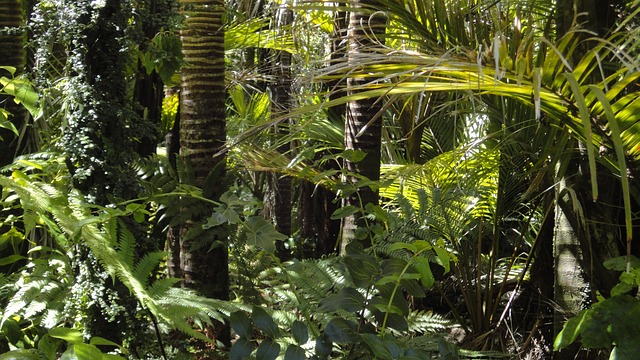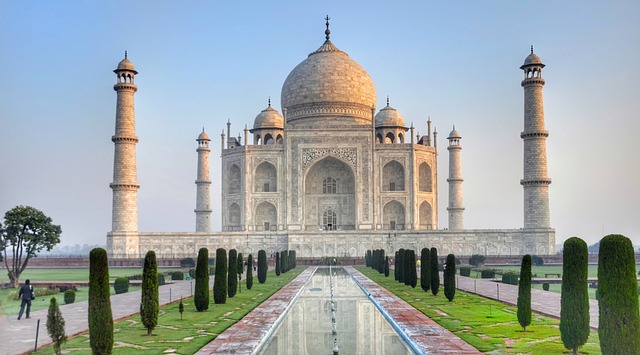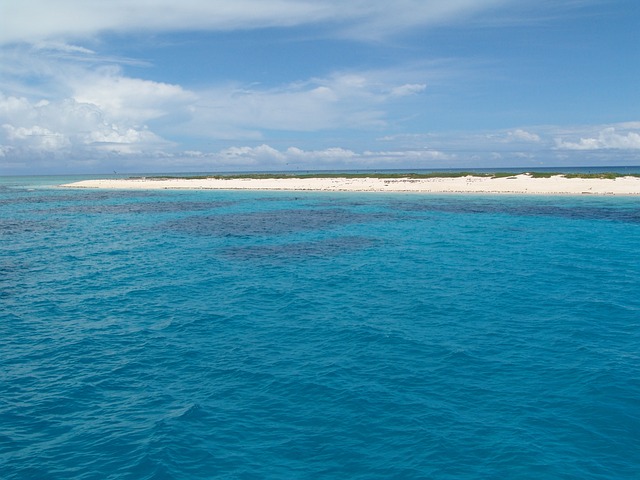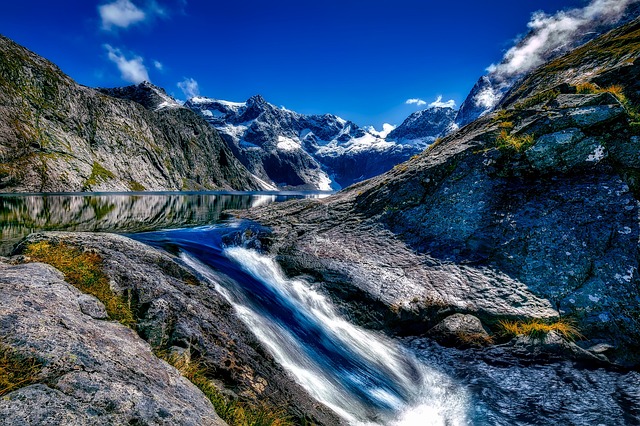Aurora Borealis: Nature’s Own Neon Light Show
The Aurora Borealis, also known as the Northern Lights, is a spectacular natural phenomenon that has captured the imagination of observers for centuries. These lights are a stunning visual display of vibrant colors that ripple and dance across the night sky, predominantly visible in regions close to the Earth’s magnetic poles. The dazzling display is a result of the Earth’s magnetosphere being bombarded by solar wind, a stream of charged particles emitted by the Sun. The interaction of these particles with gases in our planet’s atmosphere produces the breathtaking light show of the aurora.

Observing the Northern Lights is more than just gazing at celestial brush strokes; it’s an experience that blends science with the surreal. As the solar wind interacts with Earth’s protective magnetic field, it orchestrates a symphony of lights that appear to the human eye as glowing sheets or curtains of green, pink, purple, or red hues. The best sightings are usually in high-latitude locales such as Scandinavia, Canada, Alaska, and even some areas in northern Scotland, during the winter months when nights are longer, and the skies are darker.
Key Takeaways
- The aurora is an atmospheric light display near polar regions, powered by solar emissions.
- Magnetic fields around Earth direct solar particles to interact with gases, creating the lights.
- Optimal Northern Lights viewing occurs in winter months across high-latitude destinations.
Celestial Charades: Understanding Auroras

The aurora, a splendid light show in the sky, has long been a canvas for both wild imaginations and scientific inquiry. They not only light up the night in dazzling colors but also serve as a testament to the natural wonders of our planet.
Myth vs. Science: Debunking Aurora Legends
Once upon a time, before science came to the rescue, auroras were the stuff of folklore, featuring in tales of ominous portents or dancing spirits. Let’s have a quick chuckle at how far off the mark they were! People thought the shimmering northern lights signaled anything from the appearance of ghostly ancestors to a forecast of doom. Talk about a dramatic interpretation!
Fast-forward to the age of reason and science, and the aurora borealis, as well as its southern counterpart, the aurora australis, are known to be caused by charged particles from the sun. These particles collide with the Earth’s atmosphere, debunking any fears of spectral invaders. Now, they’re recognized as a natural phenomenon rather than a supernatural preview of one’s closely-guarded secrets being spilled… thankfully!
Cosmic Colors and Canvas: From Green to Red
Imagine the Earth’s atmosphere as a giant canvas, and the sun as a quirky artist splashing it with the colors green and red. While some might think the sky is just trying out for the role of traffic light with its bright green hues, there’s a bit more to the story. The green color so often captured in aurora images is thanks to oxygen molecules getting excited about their solar interactions approximately 60 miles up.
And what about the red? Higher up, where the air is thinner and elite oxygen molecules hang out, we sometimes get a stroke of red added to the mix. This isn’t the sky throwing a tantrum but rather a rarer sighting due to the differing altitudes and energies involved in the creation of auroral colors. The aurora is a bucket-list-worthy spectacle for any sky-gazer – no matter if one’s interest is in the celestial lightshow or squinting to make out shapes in the cosmic dance.
Solar Symphony: Earth’s Magnetic Maestro

When the Sun decides to send a little “jazz hands” our way in the form of charged particles, it’s Earth’s magnetic field that takes up the baton, commanding a performance in the night sky we call the Aurora Borealis. This planetary performance is not just a feast for the eyes, but a complex dance of cosmic forces.
Magnetic Field: Earth’s Protective Shield
Seen as Earth’s invisible armor, the magnetic field is the VIP bouncer at the planet’s exclusive club, deflecting most of the high-energy solar wind particles that the Sun hurls with enthusiastic consistency. But this field is more than just a shield; it’s the stage for a quite literal light show. As these particles are funneled towards the poles, by Earth’s magnetic superhighway, the geomagnetic field lines, they set the stage for the next act.
Orchestration of Ions: An Atmospheric Performance
Here comes the crescendo! The solar wind, a stream of charged particles ejected from the sun, meets the upper atmosphere with the elegance of a waltz meeting a tango. The ionosphere, part of Earth’s upper atmosphere, is home to ions that love to get down at this disco. As solar particles collide with gases like oxygen and nitrogen, they light up, creating the auroral zone — that’s right, it’s showtime! Each colored light twirls following the rhythm of Earth’s magnetic field lines, in a spectacle of green, pink, and sometimes even violet arcs and waves.
This atmospheric performance is also susceptible to the whims of the geomagnetic storm, the equivalent of an unannounced encore that blows the audience away with intensified colors, courtesy of stronger solar emissions and a juiced-up interaction of charged particles with the magnetosphere. Yet, one mustn’t forget it’s all guided by Earth’s magnetic maestro, without which skies would be much darker, and life here a lot less protected.
Nature’s Night Light: Where to Catch the Show

The Aurora Borealis doesn’t take reservations, but one can certainly RSVP by knowing where and when to see its vivid curtain call.
Globetrotting for Glows: Best Viewing Spots
When chasing these nocturnal rainbows, the dedicated aurora hunter heads to the Northern Hemisphere‘s list of usual suspects. A ticket to places like Alaska isn’t just for those seeking gold or an encounter with a moose. It’s a front-row seat to nature’s most spectacular light show, where hues of green and pink dance across the night sky. Across the pond, countries like Norway, Sweden, and Finland boast their own neon nightscapes, with Iceland playing the wildcard, where the lights are sometimes so bright, they could shame Las Vegas’s neon strip into dimming down. Not to neglect the Southern Hemisphere, where the Aurora Australis (the Borealis’s lesser-known cousin) makes an appearance for those venturing near the Antarctic.
- Alaska: The Last Frontier’s clear, dark skies offer a splendid canvas.
- Norway: Near the Arctic Circle, one may find the lights reflecting off fjords.
- Iceland: Lights so brilliant, they’ll make one forget about the lack of sunshine at midnight.
- Sweden & Finland: Forest clearings and frozen lakes are nature’s auditoriums here.
The Aurora Crystal Ball: Predicting the Performance
No need to consult a fortune-teller—forecasting agencies like NOAA and NASA exist for such celestial schedules. They analyze space weather with a zeal usually reserved for launches and coffee breaks, providing hopeful observers with forecasts that predict the auroras’ appearance on ground level. It’s not quite a science, but more of an educated guess based on solar winds and Earth’s magnetic meal times.
- Forecasts: Checking NOAA can be the difference between an unforgettable night or just a very cold one.
- Altitude: The higher, the better; elevation can mean escalation in aurora visibility.
- Arcs: Those shimmering arcs are more likely spotted at latitudes closer to the Arctic.
One doesn’t simply stumble upon the Aurora Borealis—unless they’re really lucky or possibly a bit lost.ustrate what type of visuals the reader might expect.
Beyond Earth: Auroras Across the Solar System

Auroras are not Earth’s private light show; they’re a solar system-wide phenomenon, with the gas giants Jupiter and Saturn hosting some particularly impressive auroral displays, thanks to their magnetic fields and the solar wind’s antics.
Jovian Giants: Jupiter and Saturn’s Light Show
Jupiter—the solar system’s resident heavyweight—boasts auroras that can make Earth’s Northern Lights look like a dim candle next to a lighthouse. These colossal light shows occur as electrons stream along the planet’s mighty magnetic field lines and smash into the polar atmospheres. The size of these auroras? They can stretch larger than the entire Earth. Talk about cosmic overachievers!
On the ringed wonder Saturn, the auroras take their sweet time dancing across the poles, courtesy of the sun’s solar storms and coronal mass ejections (CMEs). While the dance might not be as energetic as Jupiter’s, Saturn’s auroras distinguish themselves by lasting for days, as opposed to mere minutes on Earth, suggesting that Saturn knows how to keep the party going for the long haul.
Interplanetary Illuminations: Auroras Beyond the Terrestrial
Venturing beyond the gas giants, auroras become a more exclusive event with fewer planets inviting the solar wind to their magnetic soirées. Unlike Earth, not all planets have robust magnetic fields capable of directing charged particles towards their polar regions to whip up an auroral bash.
However, when a planet does have a magnetic field and intersects with a coronal mass ejection, it throws an aurora party—with a guest list including electrons and other charged particles tailgating from the sun. The fun begins when these particles follow the magnetic field lines to the polar regions, illuminating the sky in a spectral spectacle—a sort of interplanetary rave that gives Earth some friendly competition.







